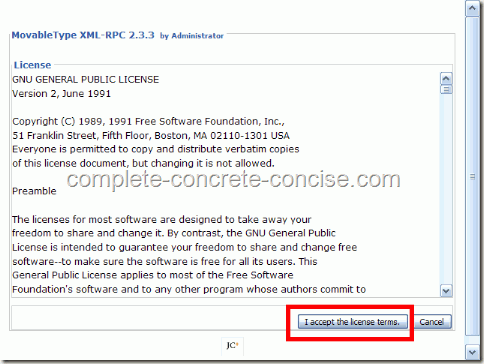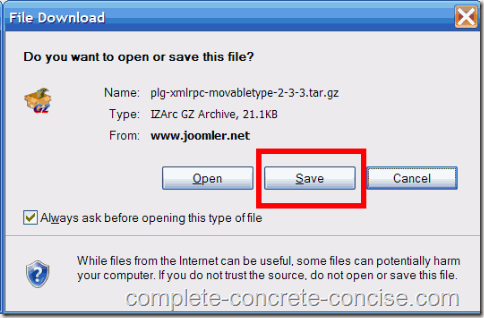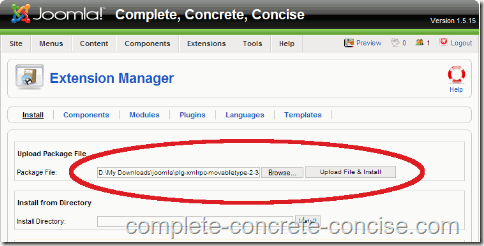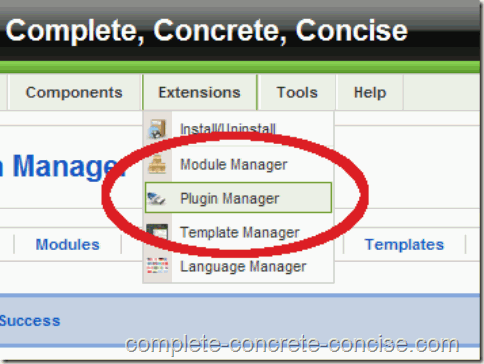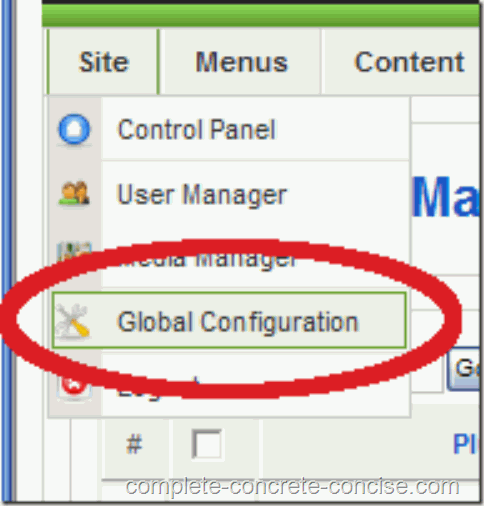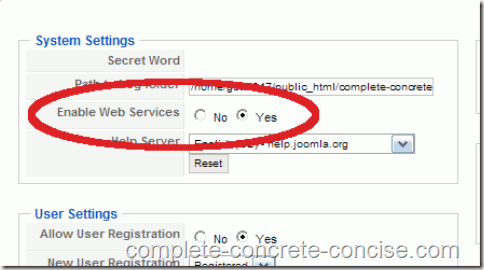The installation procedure is for Movable Type XML-RPC 2.3.3 for Joomla! version 1.5.x. It is likely the same for other version combinations, but there is no guarantee.
This installation procedure is NOT compatible with Joomla 1.6. Instructions for installing the Movable Type API for Joomla 1.6 can be found here.
There is version 2.3.4 of the plugin available as well, however, it requires overwriting one of the core Joomla! files to make it work. Since I have not noticed any problems with version 2.3.3, I see no reason to upgrade.
Click on images for full sized versions.
Installing the Movable Type API allows frontend clients (such as Windows Live Writer) to manage Joomla! articles via a blog interface. The Movable Type API is more widely supported than the Blogger and Joomla API that come with Joomla!
Downloading the Plugin
1) Download the plugin from here (note, IE 7 failed to load the page correctly, Firefox did not have any problems with the page). The download link is the package icon.
1a) Accept the GNU license terms to begin the download:
1b) Click on Save since you will need to upload the package to your Joomla! install rememberwhere you saved it):
Installing the Plugin
2) Log into the Joomla! backend and select Install/Uninstall from the Extensions menu.

3) Upload the movable type module downloaded in step 1. It should load and install successfully.
- click on Browse, select the file you downloaded in step 1,
- click on Upload File & Install.
4) Select Plugin Manager from the Extensions menu.
5) Locate XML-RPC – Movable Type API. Click on the red icon in the Enabled column. It should change to a green checkmark. Note: The default Joomla! install displays 20 items per page. You may need to increase the number of displayed plugins or navigate to a later page. The controls are located at the bottom of the page.
6) Select Global Configuration from the Site menu.
7) Enable Web Services by selecting Yes.
The Movable Type API is now available for use by external clients.
Note: Every time you update Joomla! to a new version, you need to re-enable Web Services from the control panel.
Information You Need To Provide Client Applications
When connecting a client application (e.g. Windows Live Writer) to your Joomla! site, you will need to provide the following information:
- Your main site address – what people type to get to your website. Applications vary, some require the full address starting with http://, others will accept just the site name without the http://.
- The address for the API server.
-
For people using Joomla! to power their website (most installations), this is:
[your site]/xmlrpc/index.php/
e.g. http://www.example.com/xmlrpc/index.php/
Clients differ, some need the full address and path, others are happy with /xmlrpc/index.php/. Modern clients, like Windows Live Writer 11 and Scribefire Next are able to discover the address of your API server, so you would probably never need to enter this.
-
For people using Joomla! on only part of their website, you need to enter (1) the website address, (2) the path to the Joomla! install, (3) the path to the API server:
[your site][your Joomla! path]/xmlrpc/index.php/
e.g. http://www.example.com/joomla/xmlrpc/index.php/
Clients, like Windows Live Writer 11 and ScribeFire Next will not be able to discover the address of your API Server in this case (unless you had entered your site address and Joomla! path in step 1).
-
- The user name you use to log into the Joomla! backend.
- The password you use to log into the Joomla! backend.
Free Clients Supporting the Movable Type API
This is by no means an exhaustive list and only includes those I have been able to try out in Windows. Windows Live Writer used to be my favorite (and it is still probably the best blogging client for most people), but some issues with it (and other blogging clients) made me switch to w.bloggar.
Windows Live Writer (for Windows XP)
Windows Live Writer (for Windows Vista and Windows 7)
Post2Blog (fourth up from bottom of the page)
Zoundry Raven
Scribefire (a Firefox plugin)
BlogDesk
w.bloggar
